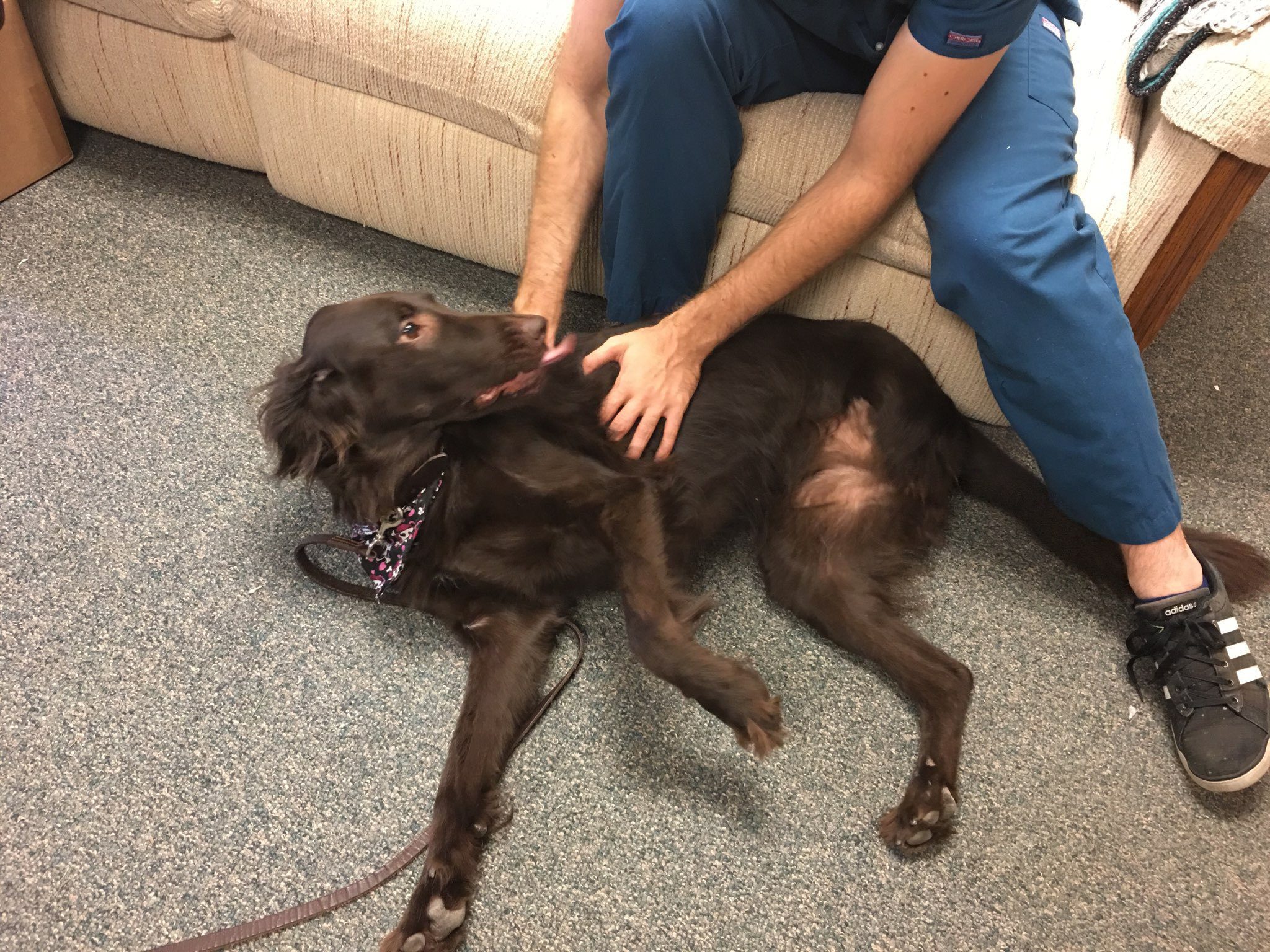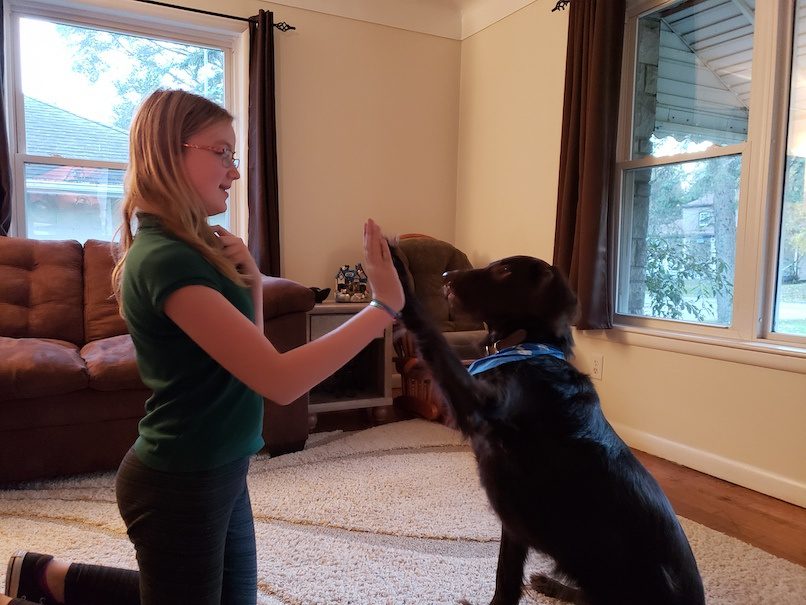
by Stasi Mitchell, LVT
My dog, Breeze, is a 5-and-a-half-year-old Flat-Coat retriever mix. She is a very happy girl who loves, loves, loves people and gets along well with other pets. She loves attention and will do anything for treats and love. My children take her for walks, run with her, play ball with her and various other things dogs like to do.
She is also a tripod dog–she has only three legs.
Our canine and feline friends essentially don’t know any difference if one of their limbs is amputated. As humans, we tend to think it’s the end of the world: pain, rehab–life as we know it is over. For a dog or a cat, they get up after surgery as though nothing has happened. Depending on the limb (rear is easier), it may take some getting used to but that typically only lasts minutes to a day.
There is a myth that a tripod cannot or will not have a good quality of life and will not be able to be a ‘dog’ or ‘cat’. The reality is that they can do anything a 4-legged friend can do. They can run, they can jump, navigate stairs, swim and are overall very happy animals!
They do still have some additional considerations, though. Even more than a four-legged animal, you do want to take care that you do not allow your friend to become overweight. Their gait is understandably different after a limb is amputated, and therefore they are more susceptible to hip issues. It is also a good idea to start them on glucosamine/chondroitin daily to help with joint issues and slow the progression of impending hip issues.
Breeze has been a blessing and has brought a lot of excitement to our lives. I do not treat her differently than I do my 4-legged dogs or patients. For anyone thinking an amputation may be the end of their pet’s world, they should know that if it’s needed, it will undoubtedly be the best decision made for your furry friend.
Recent Posts
About Us
Ann Arbor Animal Hospital is a locally-owned animal hospital operating for over 90 years in Ann Arbor, MI.


